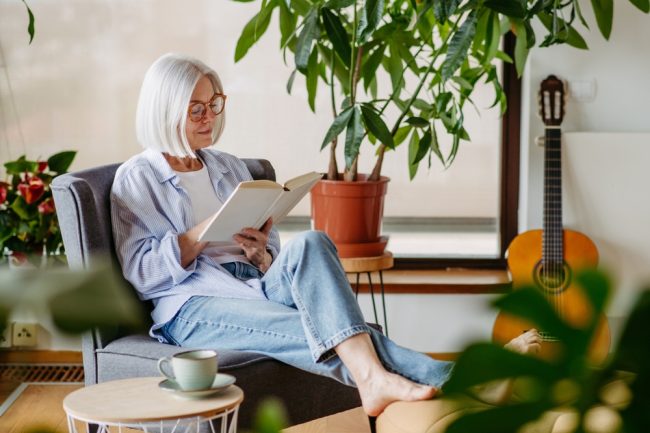
The idea that women over 50 fade from public view has lingered for decades, shaped by industries that track youth like a commodity. Yet the narrative is cracking. Stories surface of women pushed aside only to return stronger, reshaping workplaces, media, and cultural norms. Many say the dismissal is never subtle; it arrives in job interviews, medical rooms, and family decisions where their expertise gets overshadowed by age. This shift is significant because the population is aging while the demand for lived experiences grows. And it signals a deeper national recalibration in how society values women over 50.
1. They Control Economic Power Often Ignored
Economists have tracked a steady rise in spending power held by women over 50, yet advertising and corporate boards still skew young. Research from the Federal Reserve shows that women in this age group manage significant household assets even when they are not the primary wage earners. They make decisions about medical care, real estate, and long-term investments, but companies often target younger demographics with more volatility and less spending stability.
Business journalist Jane Bryant Quinn once reported that older women drive financial trends more than market analysts admit. They track budgets with precision, plan for futures that stretch decades, and avoid the speculative swings that shape younger consumer habits. These patterns challenge the stereotype that women over 50 slow down or disengage. Instead, they push forward with a clear grasp of what financial security requires in a world with rising living costs. That clarity becomes its own form of resistance, amplified every time they insist on being seen as primary economic agents.
2. They Reject Media Erasure
Television executives have long argued that audiences prefer youth, but the data rarely match that claim. Streaming platforms show strong engagement for shows anchored by older women, yet studio contracts still favor younger talent. Women over 50 have started confronting those gaps publicly. Some actors speak bluntly about scripts that cut their roles in half or costumers asked to hide what they call “age signals.”
When older characters do appear, their stories often revolve around decline rather than ambition. This pattern shapes how society imagines aging. By refusing to accept the trope, women over 50 disrupt Hollywood’s long-standing blind spots.
3. They’re Driving Workplace Change
Corporate culture often rewards speed and youth-driven branding, but it relies heavily on workers with decades of insight. Women over 50 have begun to call out performance reviews that subtly penalize age, along with promotion pipelines that narrow dramatically after midlife. Labor attorneys report cases where older applicants face rejections framed as “culture fit,” a term that often masks age bias.
In several states, workers have filed claims documenting how they were sidelined during reorganizations despite long histories of leadership. Some companies responded by redesigning mentorship programs so experience is treated as an asset, not a liability. In high-pressure fields like healthcare and journalism, older women have pushed back against the assumption that they lack technical fluency or adaptability. Their persistence reshapes hiring norms, challenging the unspoken rule that midlife marks a professional plateau. Instead, they prove that longevity strengthens judgment, perspective, and crisis management.
4. They Refuse Medical Dismissal
The medical system has its own gatekeepers, and many women describe experiences where symptoms were minimized or written off as inevitable aging. Cardiologists have published case studies of heart disease missed in women over 50 because their pain patterns differ from those in men. These stories echo through patient advocacy groups where women recount years of misdiagnoses that led to preventable complications.
Some clinicians argue that training still leans on research conducted on younger, male participants, leaving older women underrepresented in data. As they speak publicly, women over 50 force institutions to confront systemic gaps. They press for second opinions, push for expanded research trials, and challenge guidelines that fail to match real outcomes. Their insistence reshapes medical protocols and encourages others to demand care that honors their experience.
5. They Protect Community Memory
In neighborhoods facing rapid development, women over 50 often become record keepers of stories and traditions that would vanish without them. Community organizers in Atlanta and Phoenix describe how older women show up to zoning meetings, document historic sites, and track promises made by developers and city councils. These efforts anchor residents who fear displacement or cultural erasure.
Their advocacy prevents history from being rewritten by those with more money but less context. They mentor younger neighbors who want to understand how their blocks have changed over the decades. They challenge political leaders to recognize long-term residents as stakeholders rather than obstacles. Their persistence gives communities continuity in a country where mobility and turnover often fracture local identity.
Why Their Voices Carry New Weight
Women over 50 refuse invisibility because they’ve lived through cycles that taught them how power moves and who gets left out. They understand the cost of silence. As they assert themselves in public conversations, they push institutions to measure success in ways that value longevity and informed judgment. Their influence grows not because they seek attention but because their presence exposes what society overlooks.
They stand at a point where experience meets conviction. And they’re using that position to reshape expectations for the generations behind them. What stories from women over 50 have shaped your own sense of visibility?
What to Read Next…
- 8 Little Known Ways To Build Financial Security After 50
- 6 Eye Opening Realities Of Living Alone After 50
- 9 Things No One Tells You About Life After 50
- 7 Ways To Protect Your Mental Health In Your 50s And Beyond
- 6 Sneaky Ways Restaurants Trick You Into Spending More Money

Travis Campbell is a digital marketer and code developer with over 10 years of experience and a writer for over 6 years. He holds a BA degree in E-commerce and likes to share life advice he’s learned over the years. Travis loves spending time on the golf course or at the gym when he’s not working.







